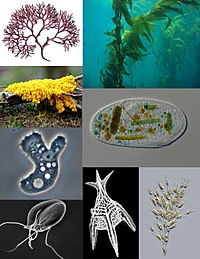
Photo from wikipedia
The decomposition of beta-diversity (β-diversity) into its replacement (βrepl) and richness (βrich) components in combination with a taxonomic and functional approach, may help to identify processes driving community composition along… Click to show full abstract
The decomposition of beta-diversity (β-diversity) into its replacement (βrepl) and richness (βrich) components in combination with a taxonomic and functional approach, may help to identify processes driving community composition along environmental gradients. We aimed to understand which abiotic and spatial variables influence ant β-diversity and identify which processes may drive ant β-diversity patterns in Mediterranean drylands by measuring the percentage of variation in ant taxonomic and functional β-diversity explained by local environmental, regional climatic and spatial variables. We found that taxonomic and functional replacement (βrepl) primarily drove patterns in overall β-diversity (βtot). Variation partitioning analysis showed that respectively 16.8%, 12.9% and 21.6% of taxonomic βtot, βrepl and βrich variation were mainly explained by local environmental variables. Local environmental variables were also the main determinants of functional β-diversity, explaining 20.4%, 17.9% and 23.2% of βtot, βrepl and βrich variation, respectively. Findings suggest that niche-based processes drive changes in ant β-diversity, as local environmental variables may act as environmental filters on species and trait composition. While we found that local environmental variables were important predictors of ant β-diversity, further analysis should address the contribution of other mechanisms, e.g. competitive exclusion and resource partitioning, on ant β-diversity.
Journal Title: Scientific Reports
Year Published: 2021
Link to full text (if available)
Share on Social Media: Sign Up to like & get
recommendations!